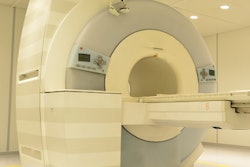
MONTREAL - The electronic medical record (EMR) is making inroads into radiology, presenting workflow challenges that may not have been present in the era when PACS was king. But the EMR also presents workflow benefits, specifically for MRI, according to a Sunday talk at the Society for MR Radiographers & Technologists (SMRT) annual meeting.
The EMR offers a number of advantages to the workflow of MRI facilities, such as being a repository for patient data like implant history, which could complicate whether a patient should undergo an MRI scan, according to Amanda Golsch, a senior business analyst at Tri-Health in Cincinnati.
"If a patient received an implant five years ago, that is information that is contained in the EMR and carries forward," Golsch said in an interview with AuntMinnie.com after her SMRT 2019 talk. "This helps with efficiency. This information does not have to be reentered once it is in the EMR."
If a patient relocates out of a given geographic area, the patient data can travel with that patient via the EMR, offering better tracking of patients with implants, she noted.
The EMR can be customized for institutions and can be used for multiple purposes, including communication, research, and education, as well as workflow efficiency, Golsch said. But at the same time, any EMR needs to be user friendly to be widely adopted and avoid having technologists frequently calling an IT help desk and being on hold to troubleshoot any challenges that arise, according to Golsch.
"If it is not easy to use, it will not be used," she said.
Typically, MR technologists see documentation from a nurse, who was an earlier point of contact with the patient, on the EMR and can verify that documentation via the EMR, which is then updated as "completed" by the nurse and technologist, Golsch noted.
"We want to make sure the information is easy to access and communicated in many different ways [to technologists]. A resource, such as a website, can be accessed in a couple of different locations in the EMR," she said. "Not every technologist accesses information in exactly the same way."
Appropriate utilization has become a major issue, especially with relatively expensive modalities such as MRI, and the U.S. Centers for Medicare and Medicaid Services has mandated that physicians first need to refer to appropriate use criteria. EMRs can help by incorporating appropriate use criteria that are presented to referring physicians when they order examinations like CT and MRI through the EMR, according to Golsch.
"Physicians placing these orders need to consult appropriate use criteria," she said. "If they do not use it, they can be considered an outlier."
The EMR can also provide alerts to MR technologists with respect to scanners that should not be used to image particular patients, Golsch noted.
"Patients who are unable to be scanned on certain scanners due to implants that they may have would be identified," she said. "There would be an alert, for example, indicating not to scan a patient on 3T due to an implant."
Such alerts also avoid unnecessary set up of a room that will not be used, preventing scheduling of a particular imaging examination in a given location, Golsch added.
But certain elements of the MRI suite's workflow have not yet been adapted for the EMR. For example, for the time being, the MRI safety sheet requires a printout to obtain a signature.
"If an electronic signature pad becomes available, then we could do away with the paper form," Golsch noted. "Once that is in place, we could do away with paper."
Mobile devices, whether smartphones or tablets, can be employed by technologists to check in patients who are scheduled to be imaged and to refer to their worklist. But Golsch cautioned against technologists using their personal devices to guard against privacy invasions. Rather, facilities should provide their own devices to staff.
"Hospitals should have designated iPhones or iPads, for example, that stay there," she said. "They should not be going out to dinner with the device."
To have the EMR function optimally in the MRI suite, proper documentation is needed.
"If you do not document properly within the EMR, you will not the full effect," Golsch stressed.


















